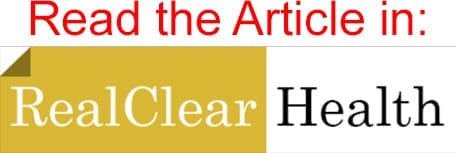Published on RealClearHealth.com |
Medicare-for-All enthusiasts gaze wistfully at government-run health care systems abroad and see much to admire.
When it comes to drug prices, the Trump administration seems to share that admiration.
The Department of Health and Human Services is preparing to launch a massive demonstration program that would link Medicare reimbursement for physician-administered drugs to foreign prices.
The program would apply to drugs covered under Medicare Part B, medicines (like chemotherapy drugs) that are generally injected or infused by doctors in outpatient settings, as opposed to those patients obtain at their local pharmacies or through the mail. (Those drugs are generally covered under Medicare Part D.)
The law specifies that Medicare is to reimburse for physician-administered drugs based on their average sales price, net of discounts, rebates, and other price concessions. The Department of Health and Human Services proposes instead to base Medicare reimbursement in part on their overseas prices. It would construct an international price index based on the average price per standard unit of a drug in 14 countries and incorporate that index into the Medicare formula.
My recent Galen Institute paper looks at those 14 countries and others and finds that their respective governments play an outsize role in setting drug prices. It also finds that citizens of those countries have access to fewer newly-developed medicines than do Americans.
Drug price-setting comes in different flavors and in different contexts. In Singapore, for example, consumers play an active role in health care financing. Government requires its citizens to contribute between 8 and 10.5 percent of their income to MediSave accounts, which consumers use to pay health insurance premiums and medical expenses.
But while Singapore puts consumers in control of the demand side of health care, the government dominates the supply side. The government’s health ministry decides which drugs to include on its “standard drug list” and regulates their prices. Consumers cannot use their MediSave accounts to purchase drugs excluded from the government list.
That list excludes a lot of them. Using data that the Pharmaceutical Research and Manufacturers of America collected from IQVIA, a health care consultancy that compiles drug pricing data from countries around the world, the Galen paper shows that Singaporeans have access to only 29 percent of new drugs introduced between 2011 and 2018. Americans, by contrast, have access to 89 percent of those innovative medications.
Nor is Singapore an exception. The Swiss have access to only 48 percent of newly-developed drugs, the Belgians 43 percent, the French 48 percent and the Dutch 56 percent.
HHS acknowledges these access issues. In an October 2018 report, it looked at the availability of 27 drugs covered by Medicare Part B in 16 countries. It found that only 11 of those medicines were available in all 16 countries.
Lack of access to new drugs can make a real difference to patients. The Galen Institute report cites a recent study of new treatments for non-small cell lung cancer, the leading cause of cancer mortality in the U.S. and the world. The study, conducted by IHS Markit, a London-based global information provider and consultancy, found that Americans with that disease gained over 200,000 life years as a result of faster access to innovative medicines. Had the U.S. adopted drug pricing policies similar to those in Australia, Canada, France, South Korea and the UK, Americans would have lost half those gains in survival rates, the study found.
The administration seems less concerned about the effect of foreign drug pricing systems on patients than with their presumed effect on U.S. prices. The president attributes high drug prices to “foreign freeloading.” Americans pay more for drugs, he suggests, because the Greeks pay less.
But if the president is looking for a government to blame for distorted U.S. drug prices, he need look no further than our own. The federal government requires manufacturers to pay rebates, grant discounts, and comply with various price-distorting directives across a range of programs.
The Department of Veterans Affairs uses multiple contracting systems and a single national formulary that restricts access to pharmaceuticals to hold down prices. Medicare requires manufacturers to provide a 70 percent discount on drugs in the Part D “coverage gap.” Medicaid requires them to pay the federal government a rebate of 23.1 percent, and nearly every state exacts additional rebates from manufacturers.
The government also mandates that drugmakers provide similar rebates to qualifying clinics and hospitals under its 340B program. The program had just 50 participating hospitals shortly after its launch in 1992. By 2016, it accounted for more than half of all drug purchases by hospitals.
By extorting price concessions from manufacturers across a broad range of programs, the U.S. government does what it accuses foreign governments of doing: artificially driving up drug prices.
In a report for the Pacific Research Institute, Wayne Winegarden cited a 2016 New England Journal of Medicine study which noted that manufacturers “can and do pass the costs of [340B] discounts to other programs.” He also cites a 2011 report in which the Government Accountability Office cites “cost shifting to other parts of the health system” as one of the 340B program’s “unintended consequences.”
A study of Medicaid rebates found that a 10 percent increase in Medicaid market share is associated with a 7 to 10 percent increase in a medicine’s average price.
U.S. drug prices are high, not because other governments are “freeloading” on our largesse, but in part because of our own government’s market-distorting policies. The most effective approach for government programs would be to let recipients choose among private insurers that negotiate prices and compete on quality and cost.
The Trump administration has some good ideas on drug pricing. Importing foreign prices into Medicare isn’t among them.


